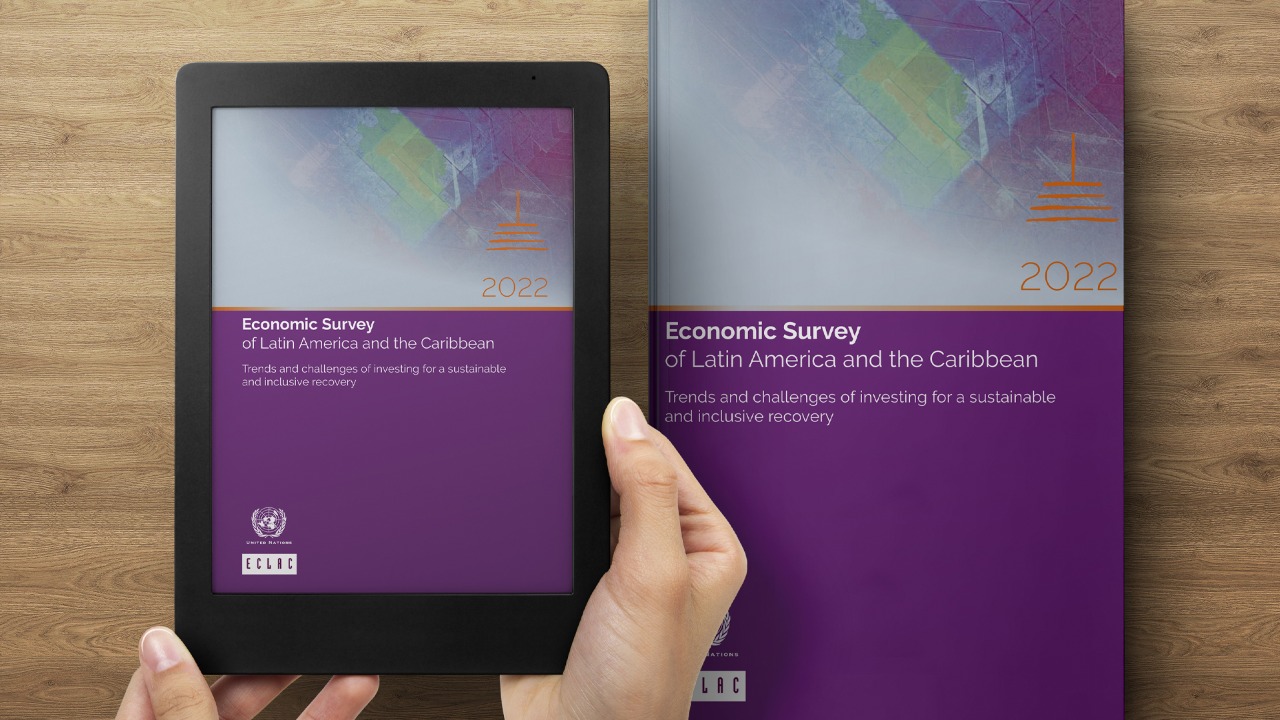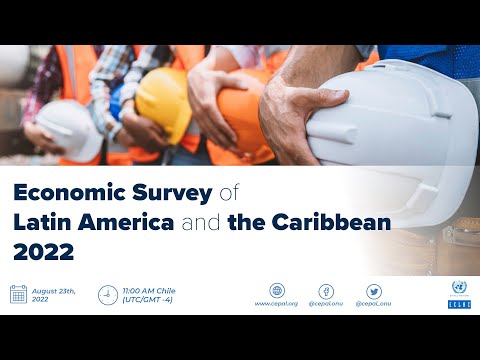In 2022 the Region is Expected to Resume the Path of Low Growth Seen Prior to the COVID-19 Pandemic, Growing 2.7% on Average
Work area(s)
In a new edition of its flagship annual report “Economic Survey of Latin America and the Caribbean,” the United Nations organization underlines the challenges of reactivating investment and growth in a context of growing external and domestic restrictions.

The Economic Commission for Latin America and the Caribbean (ECLAC) released today its annual report Economic Survey of Latin America and the Caribbean 2022: trends and challenges of investing for a sustainable and inclusive recovery, in which it projects 2.7% average economic growth for the current year in a context of acute macroeconomic restrictions that are hurting the region’s economies.
According to the report presented at a press conference held at the United Nations organization’s central headquarters in Santiago, Chile, a sequence of crises has led to the scenario of low growth and accelerating inflation seen in the global economy, and this – coupled with lower growth in trade, the dollar’s appreciation and tougher global financial conditions – will negatively affect the region’s countries.
“In a context of multiple goals and growing restrictions, there must be a coordination of macroeconomic policies that would support the acceleration of growth, investment, and poverty and inequality reduction, while also addressing inflationary dynamics,” Mario Cimoli, Acting Executive Secretary of ECLAC, stated during the launch of the Economic Survey 2022.
The document emphasizes that Latin American and Caribbean countries are facing a complex economic outlook in 2022 and in the coming years. Lower economic growth is compounded by strong inflationary pressures, little dynamism in job creation, declining investment and growing social demands. This situation has translated into major challenges for macroeconomic policy, which must strike a balance between policies that would drive the economic reactivation and policies aimed at controlling inflation and ensuring the sustainability of public finances.
In addition to the region’s complex domestic scenario, there is an international scenario in which the war between the Russian Federation and Ukraine has caused growing geopolitical tensions, less vigorous global economic growth, reduced availability of food, and higher energy prices that have increased the inflationary pressures already in play due to the supply shocks prompted by the coronavirus disease (COVID-19) pandemic, the report indicates.
ECLAC forecasts that South America will grow 2.6% (in comparison with 6.9% in 2021); the group made up of Central America and Mexico will expand 2.5% (in comparison with 5.7% in 2021); and the Caribbean – the only subregion that will grow more than in 2021 – will experience a 4.7% expansion in 2022, without including Guyana (in comparison with 4.0% a year earlier).
The Economic Survey 2022 also shows that the Ukraine conflict intensified the upward trend for commodities prices that had already emerged starting in the second half of 2020, leading some of these prices to hit historic highs. For the region on average, the effect is mixed, and a 7% decline in the terms of trade for basic products is forecast.
Inflation, meanwhile, has continued to rise, reaching a regional average of 8.4% as of June 2022, which is equivalent to more than double the average value recorded in the 2005-2019 period. At a subregional level, as of June 2022, the economies of South America had the highest level of inflation on average (8.8%), followed by the economies in the group composed of Central America and Mexico (7.5%) and those in the English-speaking Caribbean (7.3%). This has prompted central banks to raise their monetary policy rates and reduce monetary aggregates.
In addition, the deceleration in economic activity is constraining the labor market recovery, especially for women. While the male unemployment rate went from 10.4% at the end of the second quarter of 2020 to 6.9% at the end of the first quarter of 2022, marking a 3.5 percentage point drop, the female unemployment rate fell by 2.1 percentage points in the same period, going from 12.1% to 10.0%. Furthermore, at the end of the first quarter of 2022, the rate of women’s labor force participation (51.4%) showed a greater lag than the men’s participation rate (74.2%). This lag in women’s reincorporation into the labor market is conditioned by the sluggish recovery of economic sectors in which female employment is concentrated and by the increased need for care that emerged sharply once the pandemic began.
The second section of ECLAC’s report stresses that beyond the dynamics of the economic cycle, low growth in investment in the last three decades has become a structural limitation on development. This means that reactivating the investment dynamic is central to achieving sustainable and inclusive growth, since investment is the bridge between the short and medium term and is essential for confronting climate change.
Between 1951 and 1979, gross fixed capital formation (investment) grew 5.9% annually on average in real terms, while between 1990 and 2021 the annual rate of average investment growth was just 2.9%. That is why ECLAC is making an urgent call to increase investment in Latin America and the Caribbean, which was positioned at the lowest levels when compared with other regions in late 2021. To achieve this, greater coordination is needed between fiscal, monetary and exchange-rate policy, and authorities must take advantage of the full set of tools at their disposal to ensure that growth and investment is not subordinated to anti-inflationary policy. In addition, macroeconomic efforts must be complemented by industrial, trade and social policies and the care economy, the document indicates.
Finally, while the report emphasizes that an important part of the financing to increase investment should come from domestic resource mobilization, international cooperation must accompany this process. For that reason, official development assistance and financing from global financial institutions and development banks must be significantly increased.
Related content
Economic Survey of Latin America and the Caribbean 2022
Presentation by Mario Cimoli, Acting Executive Secretary of ECLAC, and Daniel Titelman, Director of ECLAC's Economic Development Division.

Launch of the report Economic Survey of Latin America and the Caribbean 2022
(English translation)

La CEPAL lanzó su Estudio Económico de América Latina y el Caribe 2022
La #CEPAL dio a conocer hoy (martes 23 de agosto) su informe anual
Related link(s)
Country(ies)
- Latin America and the Caribbean
Contact
Public Information Unit
- prensa@cepal.org
- (56 2) 2210 2040